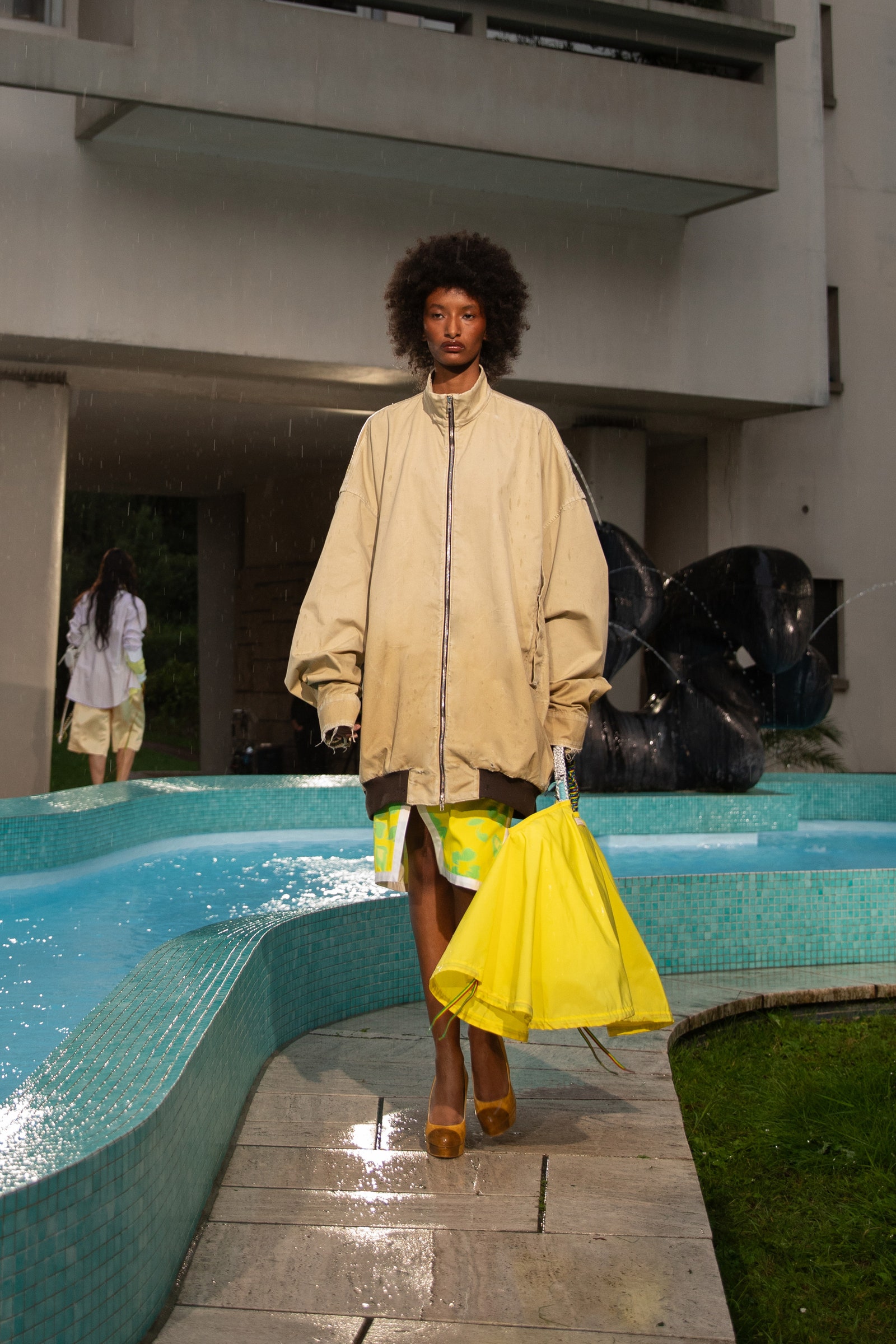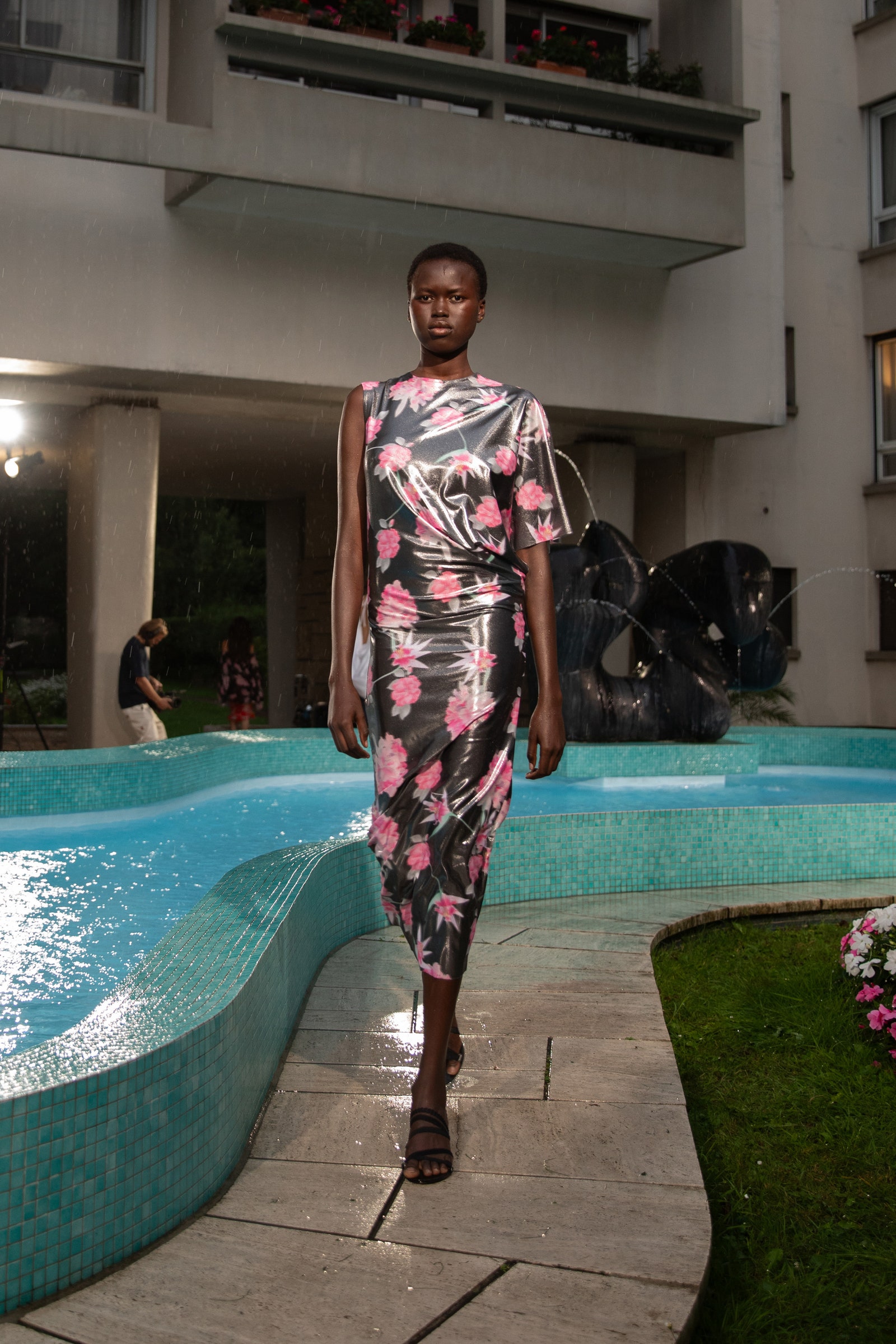That meant that for spring 2025 Kegels, a graduate of Antwerp’s Royal Academy, who time spent working for Meryl Rogge and then Pieter Mulier at Alaia, was thinking: cropped cardigan jackets and slacker surf shorts which looked like they were bouclé but were in fact intricately and densely knitted, with sneaker laces woven through to provide ‘braiding;’ a Hawaiian floral print—for an aquamarine silken empire-line slip dress, or a shimmering acid yellow blouse—which Kegels took from a vintage pair of board shorts she had found in Malibu and photographed for a blurred print which she felt made it more poetic and romantic. There was also a toweling robe at the front morphing into a trench at the back, and a crisp cotton shirt or lanky khakis which had been washed to look as though they’d been weathered by the sun and the sea.
Other witticisms were to hand: The Argyle knee socks, a vestige of Kegels’s inspirational uptight/uptown woman’s pre surf salvation (she’d been whiling her life away playing golf); ‘clutches’ which were actually towels twisted into swan shapes like the type you might see at a spa frequented by a Real Housewife; and, purses with draped dust covers, because Kegels had once seen a really ugly handbag with such a covering and the whole idea had tickled her. So, voila, here it was given an ironic nod, over some rather nice sportif purses of her own design. Just to underscore the tongue in cheekness of it all, Kegels sent the collection out to a slow, trippy, jazzy version of “Walking in the Rain” around a turquoise tiled water feature that, despite the hulking 1970s fountain, was a perfect vision of Hollywood Regency.
Ironically, the whole reason I was at Kegel’s presentation at all was due to a West Coast connection. This past summer, I visited the boutique Modern Appealing Clothing in San Francisco, and met its wonderful owners, brother and sister Ben and Chris Ospital. We fell to talking about new designers we liked and they mentioned a young Belgian whose first collection they were taking and were super excited about—yep, Julie Kegels.
It’s easy to share their enthusiasm. Firstly, and no pun intended, it takes something to wring newness out of a familiar theme like surfing. But thanks to the way she riffed on it, deconstructing it and pulling it back together with imagination and brio, Kegels did it. Secondly, and linked to firstly, she centered it on a narrative around women. This collection exuded a sense of empathy and empowerment, a confident vision of her own sex and of sexuality; it’s as if late ’90s, early noughts Frankie Rayder, athletic and tawny, was Kegels’s spirit animal. She broke into a smile when I suggested that. “Thank you! Yes, that’s it, exactly!”

















